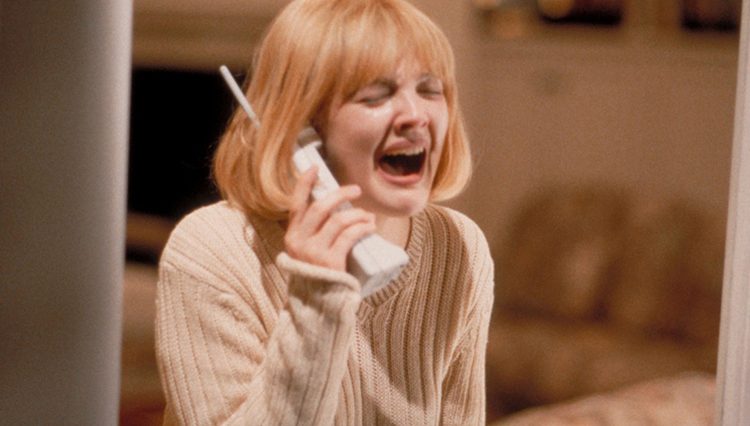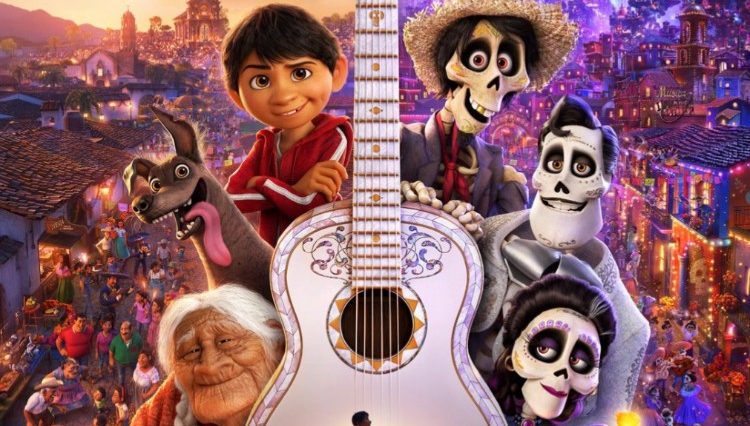“The symbol of the house of El means hope. Embodied within that hope is the fundamental belief in the potential of every person to be a force for good. That’s what you can bring them. You will give the people of Earth an ideal to strive towards. They will stumble, they will fall. They will join you in the sun, Kal. You will help them accomplish wonders. All the hopes and dreams of Krypton live in you now. Your mother and I loved you. Your heart was tested. But you gave hope to their world. Love them, Kal. The way we loved you.”
Zack Snyder’s Justice League, 2021 (Ben Affleck, Henry Cavill) Warner Bros./DC Films
It’s conceivable if audiences were not locked-down and cinemas were not forced to conform to half-capacity measures, we probably would’ve never seen Zack Snyder’s purported “director’s cut” of Justice League. Perhaps, in 30 years, we’d see a Blu-ray release, as we had the various versions of Superman from 1978. We had known about this variant of the movie for going on two years, but Warner Brothers decided to release it on the HBOMax streaming service with all the bells and whistles intact at a running time of over four hours (three hours, fifty-three if you don’t include the credits).
There is no way this movie would play in general release; not only because of the running time, but because two-thirds of the film is in mind-numbingly dull slow-motion, causing me to have 300 flashbacks. I’m not kidding. Every other scene is played in slow-motion, including epic battle scenes and simple walking shots. I’m now convinced if you played every scene at normal speed, you might knock an hour off the running time, but Snyder was so in love with his idea of mise en scène, he convinced Warner Brothers they were wrong in their decision to replace him with Joss Whedon after Snyder’s cut tested poorly with audiences.
Joss Whedon came in, rewrote more than half of Chris Terrio’s script (with a good deal of his trademarked inappropriate humor), and directed re-shoots. The result (after $300 million was spent) was a streamlined Justice League released in 2017 with a running time of two hours. Warner Brothers wildly overestimated fan interest and the movie tanked, earning back its budget, but with “Hollywood accounting,” was still considered a flop. Three years later with Whedon’s very-public cancellation in the wake of accusations about his on-set behavior, Snyder fell back into favor.
Fans clamored for a Snyder-approved cut of Justice League and $70 million (throwing good money after bad) later, the mercurial mess of Whedon’s film was transformed back into the grotesque monstrosity that Snyder envisioned. I knew, going in, there would be the inevitable comparisons to Marvel. That franchise, beginning with 2008’s Ironman and culminating with Avengers: Endgame earned over $20 billion worldwide and the movies were damned entertaining. The movies were spirited and funny.
Detective Comics (DC Films), long considered the anti-Marvel by comparison, might have ruled the realm of comic book cinema in the ’90s while Marvel languished in receivership, but the tide would turn when Marvel produced the first Blade movies starting in 1998. These were comparatively smaller movies that turned easy profits. Blade was the acorn that would grow the mighty oak, and ten years later, the Universe was created. DC had no such plan for a universe, thus bizarre visions began to creep into the mix and established properties such as Superman and Batman were verbosely (and I do mean verbosely) re-booted for modern audiences, for better or worse.
So we have a mess of franchise products, mixed and intermingling with each other to the point that Gen-Xers like me get hopelessly confused trying to keep up with the latest developments. I, seriously, have no idea what is going on half the time. At least the actors have scripts. It seems the whole thing started when Superman disapproved of Batman. Clark Kent seeks to expose Batman’s true identity in his position as a Daily Planet journalist. This leads to a plastic-hassle with Lex Luthor. Bruce Wayne manages to procure kryptonite for his weapons manufacturing concern after Superman fails to prevent Luthor from bombing a Congressional hearing. This stuff seems a little bit over-the-top, huh?
Anyway. Batman/Bruce Wayne has a bad feeling about Superman, and it doesn’t help when Luthor kidnaps the love of his life, Lois Lane, and then demands Batman freaking kill Superman or else Luthor will kill Lois (and Clark’s mother, Martha). When Superman is finally able to convince Batman they were both misled, Luthor unleashes his giant spider, I mean, mutated monster, which is also, conveniently, vulnerable to kryptonite. Superman (with assistance from Gal Gadot’s Wonder Woman) uses Bruce Wayne’s kryptonite-enhanced weapons to kill the monster, but he loses his life in the process (as does, of course, Clark Kent).
This actually isn’t terrible, but the CGI is god-awful to watch. The whole thing plays like a cartoon, but Batman vs. Superman is vastly superior to any incarnation of Justice League just for the sheer invention. With Superman dead, the stage is set for Justice League. And then there was Steppenwolf…and his Mother Boxes. We could call them “living computers,” or more accurately, Infinity Stones, but the Gods of the Macguffin have deemed them Mother Boxes.
If Steppenwolf can retrieve the three Mother Boxes left behind on Earth after a failed invasion thousands of years ago, he can present them to his immediate supervisor (and, coincidentally his nephew), Darkseid, who will then use them to 1) destroy the Earth and 2) remake the Earth into Steppenwolf’s home world, Apokolips (cute name for a planet, no?). What’s missing is the “grudge element.” Thanos had a grudge. I couldn’t possibly tell you what Steppenwolf’s motivation is for his reckless anti-social behavior. He’s just homesick. He’s suffering from Carpathian kitten loss. He’s missed his kittens…
Anyway, when Superman died, the proximity alarms went off inside the hidden Mother Boxes, giving Steppenwolf a homing signal so he could return to Earth with his legion of parademons, these flying valkyrie-things that enjoy murderous rampages and long walks on the beach, or something. Steppenwolf and the parademons invade Diana Prince’s homeland, and Diana’s mother, Queen Hippolyta (Connie Nielsen) sends an arrow to an Amazon temple like a message in a bottle as a signal to Diana that there’s trouble with a capital “T.”.
As the world still mourns the death of Superman, Diana hooks up with Bruce Wayne to tell him of the impending threat, as well as fill us in on Darkseid’s story. Wayne makes overtures to Aquaman Arthur Curry (Jason Momoa), The Flash Barry Allen, and Cyborg Victor Stone (Ray Fisher) to join his group of Avengers—I mean-Justice Leaguers. Imagine a less funny, less entertaining, cold, dark, slow-motion version of Avengers: Infinity War with ridiculously obvious CGI and you’ll get the idea rather quickly. Along the way, we get what passes for origin stories with The Flash and Cyborg.
Barry Allen applies for a job at a pet store. At first glance, he’s another dorky white guy. He meets a cute girl on her way to work. A careless truck driver isn’t paying attention at the wheel. There’s a slow-motion collision with a hot dog stand. The Flash, in the middle of his interview, rescues the girl (in slow-motion with flying hot dogs) to the strains of “Song to the Siren” (that was low, Justice League), and races back to the store just in time to surround himself with puppies and impress the owner. It’s bizarre to me that this one bit is better than anything else in the movie. It’s a truly stunning sequence.
Cyborg was a high school football star who very nearly dies in a car crash with his mother (who did die) and was reconstructed by his scientist father (Joe Morton) with the aid of a Mother Box, and now has the power to … what? Well, he’s strong, we know that. He can connect with random computers and … talk to them, I guess? Okay, that’s definitely a super power. So, for the first half of the movie, we get 20-25 minutes of backstory for each superhero, and then broken up into Quentin Tarantino-style chapter stops with titles like “The Age of Heroes” and “Change Machine.”
Speaking of Tarantino, I don’t know why, with a four-hour movie, Zack Snyder’s Justice League could not be broken up into episodes like The Hateful Eight. It would certainly make it more palatable, and it also seems the narrative is episodic. In addition to that, the action is so internalized and connected to the major players, we’re quick to forget there’s a whole world out there we’re not seeing. “Song to the Siren” notwithstanding, there are some seriously bizarre musical interludes in the movie that could play as standalone music videos. Every time Wonder Woman (or her ilk) engages in roundhouse kicks and flies through the air, we hear some kind of Dead Can Dance chant-singing I can’t readily identify, and it gets to be tiresome.
With Wayne’s Justice League assembled (minus dead Superman), they go after Steppenwolf, who has kidnapped (I’m sorry, kidnapped?) Cyborg’s father. The mission is a success, more or less, but it’s obvious the team (such as they are) is no match for Steppenwolf and his parademons. Somebody comes up with the brilliant idea to resurrect Superman by means of a Mother Box (controlled by Cyborg) and the amniotic fluid in the genesis chamber of a discarded Kryptonian scout ship using an electrical charge supplied by The Flash as a catalyst. They exhume Superman and perform the Frankenstein Maneuver, bringing him back to life.
Superman comes back, but he’s not quite right in the head and, in his amnesiac delirium, beats the holy hell out of the remaining members of the Justice League. Lois Lane (Amy Adams) shows up in the nick of time to remind him he’s not a lunatic. He, quite literally, sweeps her off her feet and flies off to Smallville and his family’s foreclosed farm. He convalesces with Lois, catches up with his mother, Martha (Diane Lane), proposes marriage, and gets a nice pep talk from Jor-El (Russell Crowe), and this is when I wanted to hear the John Williams theme, but I didn’t get it.
This version of the movie removes musical signature pieces identifying both Batman and Superman, and it feels wrong not to hear John Williams’ thunderous, triumphant Superman theme, and Tom Holkenborg’s reinstated musical score is generic and lifeless. While Zack Snyder’s Justice League is most definitely thunderous, it is not triumphant. It is a four-hour tribute to failure that, for me, only improves slightly on the theatrical cut by expanding on certain scenes, adding more characterization to ancillary characters and, most importantly, saturating us with a pessimistic sense of dread in every shot. There is no joy in this particular Mudville.
This cut of the movie needed another pass. It’s a fine rough draft; a workprint of what could be a fantastic film. Scenes are tight but run way too long, and the movie suffers from being bottom-heavy. A compromise could have been reached with a combination of Snyder’s camerawork (his strong suit) and Whedon’s no-nonsense dialogue (his overwhelming strong suit). Of course, this is coming from someone who thinks the 2004 remake of Dawn of the Dead was Snyder’s best work, so take it with a grain of salt. I know what I like. I like a tight, economical story, characters I can understand, and a resolution that justifies the journey, but I’m silly that way. Zack Snyder’s Justice League will, more than likely, divide an already weary fan base.










